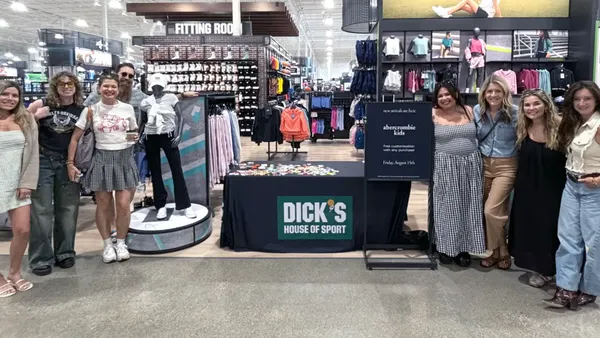Dive Brief:
-
Walmart is working on a facial recognition system for use in store checkout lines that would allow the retailer to use video cameras to detect dissatisfied shoppers, Business Insider reports.
-
A patent filing regarding the system suggests that cameras would capture customers' facial expressions and movements to gauge varying levels of dissatisfaction, the Business Insider report stated.
-
The patent filing comes two years after Walmart reportedly (and controversially) tested facial recognition technology to some extent in order catch shoplifters, but abandoned the project as a failure, according to a Fortune story in November 2015.
Dive Insight:
Walmart's previous reported test of facial recognition technology seems to be one of the stranger episodes in the recent history of retail. The accuracy of the report and Walmart's intentions for testing the technology, as well as its experience, were questioned in 2015 in the days following the Fortune report.
The fact that the retailer might again be developing an application around facial recognition technology is not exactly surprising. Companies like Mastercard are starting to move in the direction of using the technology for payments verification.
Also, the technology system that Walmart apparently is developing and seeking a patent on has some similarities to the Emotion AI system created by Cloverleaf using technology from Affectiva. That approach is a shelf-based system that seeks to capture shopper sentiment at the time that a decision to purchase (or not purchase) is made. The system recognizes some aspects of a shopper's appearance — age range and ethnicity, for example — but doesn't personally identify people.
Walmart doesn't appear to be calling its approach Emotion AI, and that could have something to do with who evaluates the images captured. It seems like the retailer wants to retain a similar sense of sentiment as customers are passing through the checkout line instead of looking at an item on the shelf. As facial recognition and Emotion AI technologies continue to develop, there may be many different ways and places in which they can be used. Getting a relatively accurate sense of how a customer feels, or what satisfies them or dissatisfies them the most in stores, could be immensely valuable as retailers work to meet their needs. However, these technologies also may require customer opt-in, or at least an ability to convince customers their privacy is not being violated.













